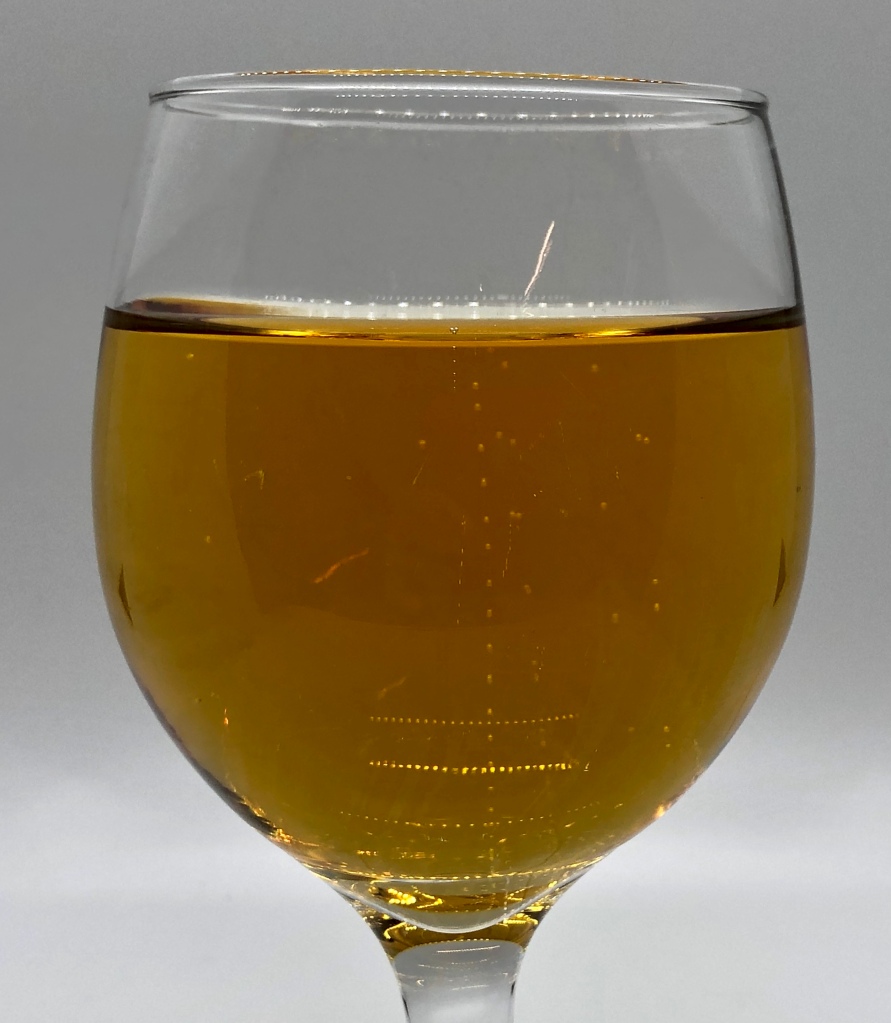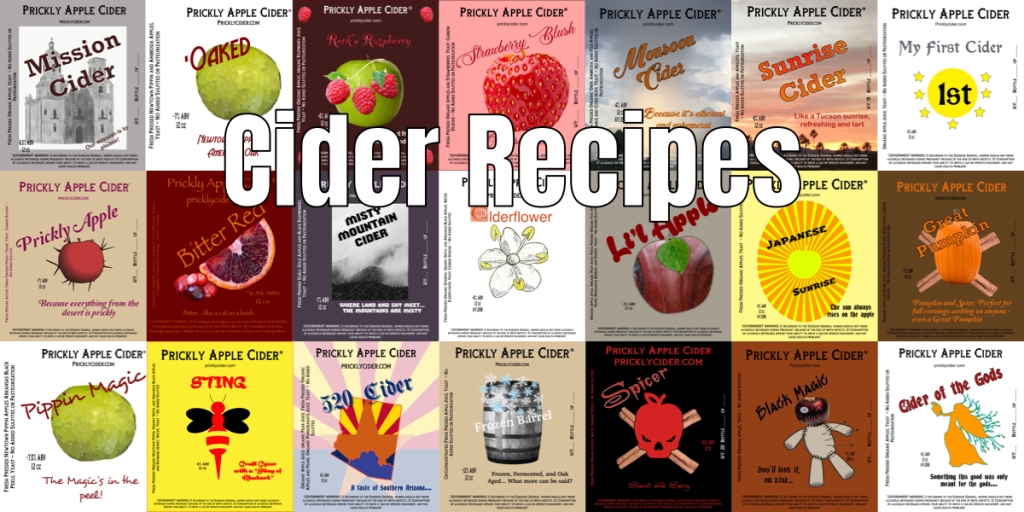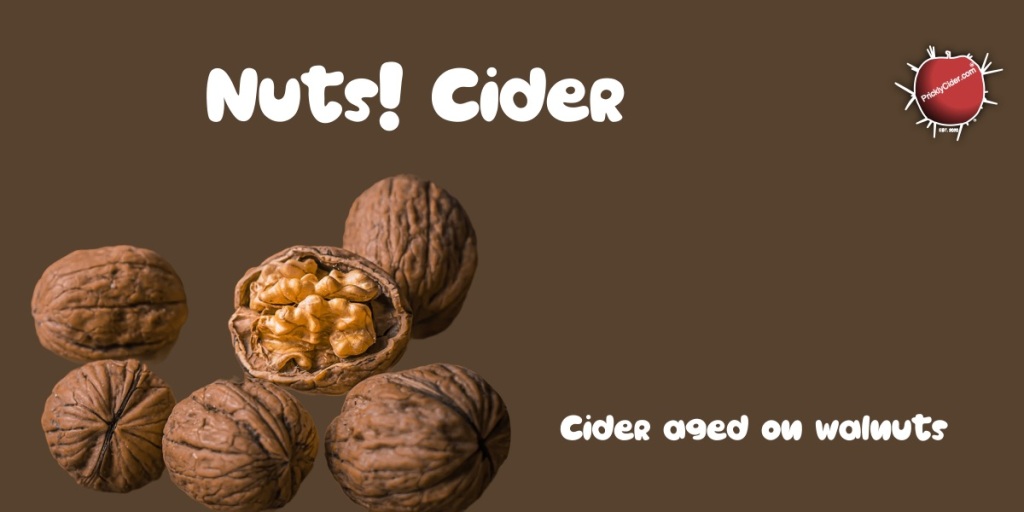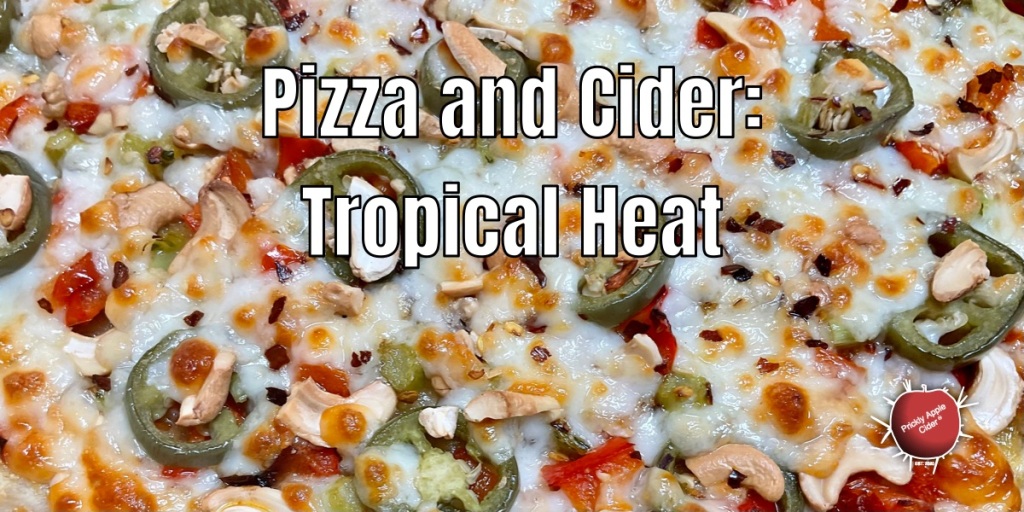
520 is a hard cider recipe focused on the apples and fruit of Southern Arizona. It was my attempt at developing a hard cider recipe that would have the look and tasting characteristics of a hard cider made with some true cider apples in the blend. The only problem is that Southern Arizona isn’t known for its cider apples. We have the standard dessert apples and pears like Gala, Red Delicious, Granny Smith, Fuji, Bartlett, Bosc, and Anjou. We even have some newer varieties like Ambrosia, Sweetly, and Asian pears. I can get the sugar, the acid, and even some good aromas, but I can’t get the tannins; at least not from apples.
Tannins are where the pomegranate comes into play. I tried citrus and made some tasty hard ciders like Bitter Red and Bitter Orange. Using the peel allowed me to get the bitter element you’d find with tannins in cider apples but you also get a very strong citrus aroma. While I like my citrus hard ciders, I wanted something more traditional tasting so I kept looking. Manzanita berries and prickly pear fruit were two other experiments, and again, I enjoy them but they became the focus.
That led me to try pomegranate. It’s a common enough fruit for the desert and it contributes some tannins and amber color to the finished product. I also found it didn’t overpower the apples but seems to blend well with them. Blending this with the pears to give it a touch more residual sweetness give me a hard cider that has a great balance. As shown in this recipes, I’m moved away from juice and now do fresh pressed apples and pears but it can easily use either.
As always, you can age, cold crash, and even fine it instead of filtering it. Use can also bottle condition it instead of force carbonating. My recipes focus on my method, which uses kegs but is easily adapted. If you have questions about how to adapt this or any recipe, drop me a note. However, here is an overview of how some ways to adapt other methods.
If you don’t have a filter, focus on aging longer and cold-crash the hard cider at the end. Just remember that after you rack your hard cider the first time, you don’t want to store it in plastic and you want to minimize the headspace and exposure of your hard cider to oxygen.
Why avoid plastic? Because plastic actually passes vapor. It’s why plastic soda bottles can go flat, even if they aren’t opened. If you are storing your hard cider for a few months, you shouldn’t have an issue, but if you age for longer periods, consider the impact. You want to avoid oxygen exposure after the fermentation. That also means to minimize the headspace in your aging container. Glass carboys work well, but you might need to add water, more juice, or other hard cider to fill up any headspace. This is why I like kegs, because you can purge the oxygen with carbon dioxide (CO2) and don’t need to dilute your hard cider.
Also, you can cold-crash your hard cider, which is simply placing the cider in a refrigerator or cold environment. This causes the yeast to be stressed and flocculate together, growing heavy, and settling to the bottom. Filtering is not required to make a clear hard cider. Aging and cold-crashing can give you one as well. See more information on clarifying hard cider in the tips section. However, also remember that hazy cider can also be good hard cider.

If you can’t filter, you probably can’t force-carbonate your hard cider. Again, you have a good alternative: bottle-conditioning. Bottle-conditioning is simply adding a small amount of sugar to a hard cider right before you bottle it, and using either the residual yeast or adding some yeast to create CO2 that will be forced into the hard cider. Remember, most hard cider will have around 0.8-0.9 volumes of CO2 already suspended in it after the primary ferment is done. If you want 2.5 volumes of CO2, you would need to add approximately 25 grams of sugar to a gallon of hard cider. I’d also recommend adding CBC-1 bottle-conditioning yeast when you add your sugar. This is made to be a neutral flavor profile and form a dense cake at the bottom of the bottles. This helps when pouring to avoid mixing the lees caused by bottle-conditioning.
This cider should have an ABV in the 6.0-7.0 range. The carbonation will medium, and the color will have a nice light amber tone. It should be well balanced but will probably be slightly acid-forward with some tannins thrown in and a little sweetness. It’s great to pair with sandwiches, cheese, and other comfort food.
Let me know how your batch turned out and what food you enjoyed with it. If you have questions, leave a comment or check out my hard cider tips section or book for more details.
For my latest tips and recipes, follow me.
It is that simple and there is no catch. I’m not going to sell your email or bombard you with unwanted requests to buy things. It will also give me a way to respond if you have questions about hard cider or need help with a batch. Stay safe, drink cider!




